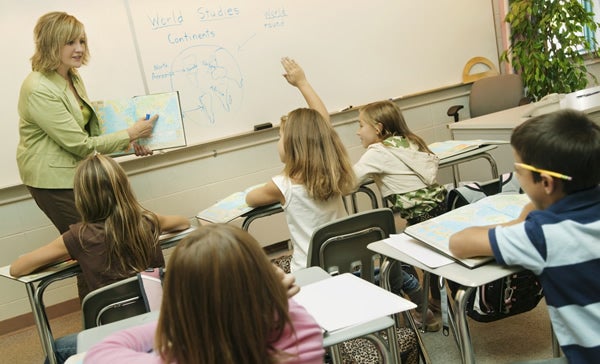According to a new poll by the education research journal Education Next, 65 percent of the American public wants education spending to increase. That figure, the poll’s architect Paul Peterson notes, is the kind of polling data “that the president’s political advisors undoubtedly rely upon when they decide to appeal for more education spending.”
But that figure drops significantly—by nearly half—when respondents realize that their taxes are at stake. When asked, “Do you think that taxes to fund public schools around the nation should increase, decrease or stay about the same?” just 35 percent supported increasing education spending.
Similarly, when informed that nearly $13,000 per child is spent in public schools, support for increasing education spending stands at just 49 percent. Peterson detailed the poll’s findings in The Wall Street Journal on Friday, noting:
So there is the nation’s debt crisis in a nutshell. If people aren’t told that nearly $13,000 is currently being spent per pupil, or if they aren’t reminded that there is no such thing as a free lunch, they can be persuaded to think schools should be spending still more.
How much more would support for spending increases drop if policymakers presented the American public with data on historical spending increases and how little they have impacted student achievement?
Since the 1960s, federal per-pupil expenditures have nearly tripled, after adjusting for inflation. Since the 1970s, they’ve more than doubled. Yet since the mid-1970s, reading achievement has flatlined and graduation rates have remained stagnant.
Poor and minority students have been particularly ill-served by liberal education policies that argue that more money is needed to improve outcomes. More money is thrown at poor-performing public school systems instead of providing low-income children with a lifeline to a quality education: control over how and where they spend their share of education funding.
More than any other education reform to date, school choice improves outcomes for children. School choice—whether vouchers, tax credits, or education savings accounts—increases academic achievement and attainment levels, increases parental satisfaction and child safety, and puts families—not governments—in charge of their children’s education.
When given the facts, Americans understand that government spending isn’t the solution to the nation’s problems. Just as government cannot create jobs, continued government control of education will not improve it. Instead of throwing more precious taxpayer money into a failing public education system, give parents control over those dollars to choose a school that is in the best interest of their children. That will do more than any spending increase ever will.





























